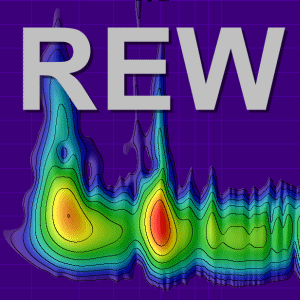Good day all, this is going to seem somewhat basic, but I'm going to ask it anyway.
I'm wondering what the "perfect world" Frequency Response SHOULD be based on the volume (SPL) that is used prior to the actual measurement sweep in REW.
For example:
If prior to the measurement sweep I use pink noise in the Generator and use the SPL Meter to set the AVR volume to a level to say 75dB, and then I run the sweep (all things remaining the same), in a perfect world, should the Frequency Response from that measurement result in a flat response of 75dB across the sweep range (provided the speaker had the capability to reproduce all of the measured frequencies at 75dB)?
If that is in theory what should happen, then would it follow that the real world results could be interpreted to mean that any part of the frequency response that measures above 75dB is simply that same 75dB signal being boosted by the effects of the room?
And if so, then using that same line of reasoning, it would follow that any points along the graph that fall below 75dB are also being caused by the room?
The reason I ask is because if in the above example the 75dB line is where the response should having been, it makes the dips/nulls seem less severe when measured from that 75dB point instead of comparing them to the bumps/peaks that rise above the 75dB line in other areas of the graph.
Using the attached graph, if the Generator was used to set the output SPL to 75dB for the sweep, would it be safe to assume that everything from around 9Hz to about 122Hz is room gain? So that the dip at around 72Hz is not really a null but just less room gain at that point? If so the that would make the response seem better the what that null between 30Hz and 60Hz would otherwise suggest.


I'm wondering what the "perfect world" Frequency Response SHOULD be based on the volume (SPL) that is used prior to the actual measurement sweep in REW.
For example:
If prior to the measurement sweep I use pink noise in the Generator and use the SPL Meter to set the AVR volume to a level to say 75dB, and then I run the sweep (all things remaining the same), in a perfect world, should the Frequency Response from that measurement result in a flat response of 75dB across the sweep range (provided the speaker had the capability to reproduce all of the measured frequencies at 75dB)?
If that is in theory what should happen, then would it follow that the real world results could be interpreted to mean that any part of the frequency response that measures above 75dB is simply that same 75dB signal being boosted by the effects of the room?
And if so, then using that same line of reasoning, it would follow that any points along the graph that fall below 75dB are also being caused by the room?
The reason I ask is because if in the above example the 75dB line is where the response should having been, it makes the dips/nulls seem less severe when measured from that 75dB point instead of comparing them to the bumps/peaks that rise above the 75dB line in other areas of the graph.
Using the attached graph, if the Generator was used to set the output SPL to 75dB for the sweep, would it be safe to assume that everything from around 9Hz to about 122Hz is room gain? So that the dip at around 72Hz is not really a null but just less room gain at that point? If so the that would make the response seem better the what that null between 30Hz and 60Hz would otherwise suggest.














